Birch is taller than I am! Here he is at the top of a small mountain with Pushkar, Rajastan, far below. Today I am grateful for $2 all-he-can-eat buffets...
_ A good friend has asked whether I love India - I have great memories of when I first came here (1984) - at that time, I vowed to come back for 6 months to see all the places I never got to. Our guide had organized everything through his company Canadian Himalayan Adventures - we stayed . . .
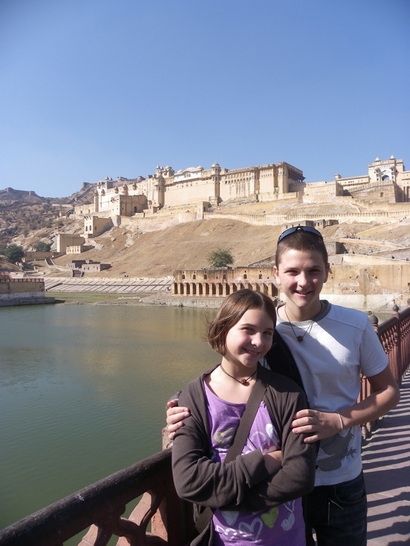
_Today we went to Amber Fort which is 12km north of Jaipur. The weather in Jaipur is brisk -- dry and chilly when you are in the shade and very warm when you are in the sun. This brisk morning we were on a bus heading to Amber Fort. When we got there the first thing that caught my attention were around twenty monkeys grabbing food from each other, chasing each other around and jumping through crowds of pigeons causing them to scatter in a cloud. When we got inside the gates to the Fort there was a long walkway over a moat that led to a huge stronghold overlooking the valley. Following us were a whole bunch of vendors and hawkers who were yelling prices at us and telling us to buy their stuff. Being seasoned travellers of India by now we knew to . . .
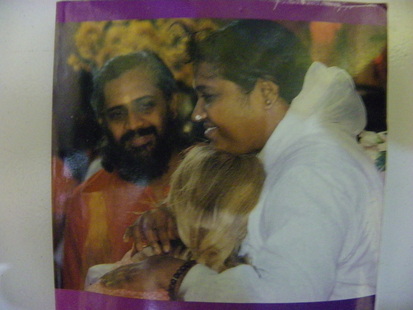
_ All guests and devotees of the ashram are expected to do a minimum of 2 hours of seva or volunteer work while visiting or staying for extended periods. Seva in Amma's words is "selfless service". During our week long stay at the ashram, I did quite a variety of 2 hour services for the community. It is very organized which is necessary because we are told there are about 5,000 permanent residents or renounciates as they are called. This number can almost double with visitors during busy times of the year. Providing and running such a large community requires a very efficient system of organizing and scheduling.
The next morning after arriving we all go to the "Seva" desk. Here a person gives you a list of various jobs that are needed to be filled for the days ahead which are accessed through the ashrams computer network. As guests we can then choose which jobs we arinterested in and are capable of doing. Most jobs are menial, grunt jobs that are necessary to keep the ashram functioning. For example . . .
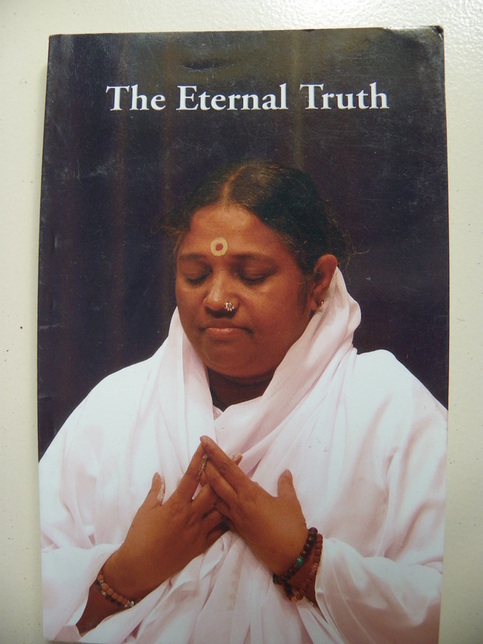
_We have spent an enjoyable three days at Green Palm Homes and now we are travelling south again to a tiny fishing village along the coast of the Backwaters where a modern day guru has estabilshed an ashram with a huge following. A few weeks earlier, while we were in Auroville, Carolyn met a woman who asked if we knew "Amma" the hugging Guru. We had never heard about her and the woman said Amma had changed her life and if we had the opportunity we should go and visit her ashram in Kerala. We discovered that we were not far from the ashram and a daily boat plys the waters of the region which stops at the Ashram, so we . . .
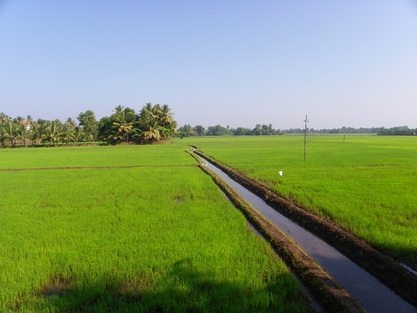
This is a view of the rice fields from our cottage during our stay at Green Palm Homes
We arrived at Green Palms Homestay on New Year's Eve. It had been quite a journey to get here which seems to be the case when travelling by bus in India. We arrived in Allepey which is the gateway town to the backwaters of Kerala. Upon arriving we walked from the bus station about a kilometer to a boat ferry stop that would take us to the homestay. This was very exciting! We hopped on the ferry and rode for about one hour along the waterways. Riding along in the ferry was a real treat even after being on a bus for four hours, as the air is clean and the waters were tranquil. When we were dropped off, we walked along . . .
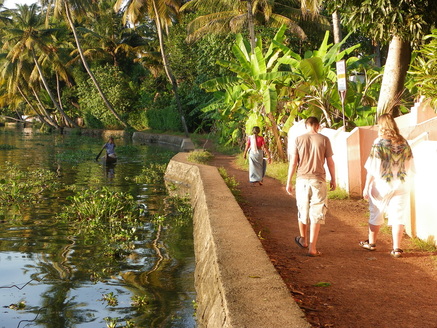
_2012! We hung out at Green Palms, for most of the day, then in the afternoon we took a walk along the rice fields, with Thomas, our guide telling us all about them. One rice crop takes about four months to grow, so they usually have two crops, and during monsoon season the farmers let their fields lie fallow. Our guide also told us how essential the coconut palm is to the community. The roots keep the dikes from sinking into the sea, and the leaves are used to thatch the roofs. The hair on the outside of the coconut has many uses as well, from being woven into mats to being used as primitive toothbrushes! The shells are used to burn, because they burn slowly and hot, and catch fire very easily. They sell the meat or use it in their dishes. Thomas says that the farmers could not farm if not for the coconut!
Birch